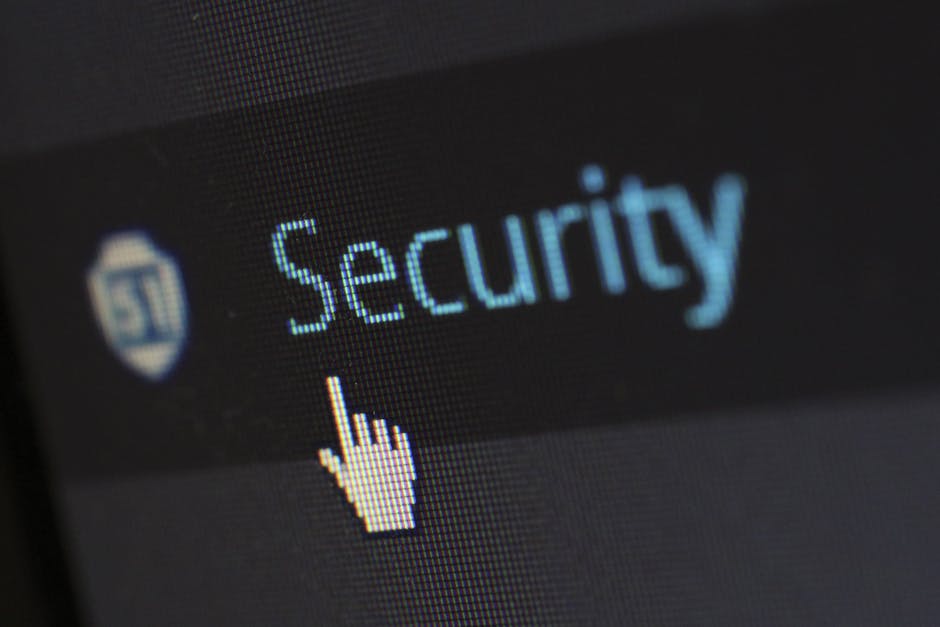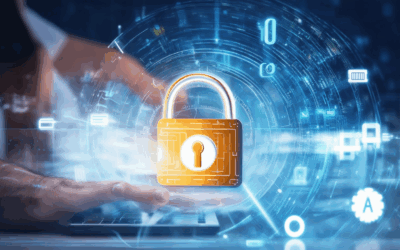In today’s increasingly interconnected world, safeguarding your digital presence has become an essential aspect of modern life. As technology advances at breakneck speed, the importance of digital security cannot be overstated. With numerous threats lurking in the shadows, from phishing scams to malware attacks, it’s crucial to stay informed about the latest cybersecurity best practices. For those new to the realm of digital security, navigating the complex landscape can seem daunting. However, by mastering the fundamentals of confidentiality, integrity, and availability, individuals can significantly bolster their defenses against potential threats.

The 5 Cs of Security
I’m often asked what the 5 Cs of security are, and I’m happy to explain.
- Change: Change is a fundamental aspect of security. It refers to the need to regularly update and patch software, systems, and processes to stay ahead of emerging threats. By embracing change, organizations can reduce their attack surface and minimize the risk of cyber attacks.
- Compliance: Compliance is critical in today’s regulatory landscape. It involves adhering to industry standards, regulations, and best practices to ensure that sensitive data is protected. By prioritizing compliance, organizations can demonstrate their commitment to security and reduce the risk of non-compliance fines.
- Cost: Cost is a significant factor in security decision-making. It involves weighing the costs of implementing security measures against the potential risks and consequences of a breach. By understanding the true cost of security, organizations can make informed decisions that balance risk and budget.
- Continuity: Continuity is essential for businesses that rely on technology to operate. It involves having plans in place to ensure that operations continue uninterrupted in the event of a disaster or outage. By prioritizing continuity, organizations can minimize downtime and ensure business resilience.
- Coverage: Coverage refers to the scope of security measures implemented to protect an organization’s assets. It involves ensuring that all vulnerabilities are addressed and that security controls are in place to prevent unauthorized access. By prioritizing coverage, organizations can ensure that their security posture is robust and effective.
At Blind Browser, we understand the importance of these 5 Cs in security. Our team of experts is dedicated to helping organizations navigate the complex world of cybersecurity and stay ahead of emerging threats.
By embracing change, prioritizing compliance, managing cost, ensuring continuity, and achieving coverage, organizations can build a strong foundation for security and reduce the risk of cyber attacks.
The 5 Basic Principles of Security
I’m committed to protecting my online presence and maintaining confidentiality, integrity, and availability of my digital assets.
-
Confidentiality
Ensures that sensitive information remains private and is not accessible to unauthorized individuals or entities.
This principle is crucial in preventing data breaches and cyber attacks that can compromise personal or financial information.
As a responsible individual, I understand the importance of encrypting sensitive data and using secure communication protocols to safeguard my online activities.
-
Integrity
Guarantees that data is accurate, complete, and not tampered with during transmission or storage.
This principle is essential in maintaining trust and credibility in online transactions and interactions.
To uphold this principle, I regularly update my software and operating systems to prevent vulnerabilities and ensure that my devices are running with the latest security patches.
-
Availability
Ensures that data and systems are accessible and usable when needed.
This principle is critical in minimizing downtime and ensuring business continuity in case of unexpected disruptions.
To guarantee availability, I invest in robust backup systems and disaster recovery plans to mitigate potential risks and ensure seamless operations.
-
Authentication
Verifies the identity of users, devices, or systems to ensure that only authorized parties have access to sensitive information or systems.
This principle is vital in preventing unauthorized access and ensuring that sensitive data is protected from malicious actors.
To implement authentication effectively, I use strong passwords, two-factor authentication, and biometric verification to secure my online accounts and devices.
-
Non-Repudiation
Ensures that a sender cannot deny sending a message or data, and a receiver cannot deny receiving it.
This principle is essential in establishing accountability and trust in online transactions and communications.
To uphold non-repudiation, I use digital signatures and encryption to verify the authenticity and integrity of electronic messages and documents.
By understanding and implementing these fundamental security principles, I can significantly reduce the risk of cyber threats and maintain a safe and secure online environment.

The Three Pillars of Digital Security
I’m committed to protecting my online presence, and I’ve learned that there are three fundamental principles that underpin digital security: confidentiality, integrity, and availability.
-
Confidentiality
Confidentiality refers to the protection of sensitive information from unauthorized access or disclosure. This includes passwords, personal data, and financial information. To maintain confidentiality, I use strong, unique passwords, enable two-factor authentication, and keep my software and operating systems up-to-date.
I also take advantage of features like encryption and password managers to safeguard my sensitive information. For example, I use Blind Browser‘s built-in password manager to securely store and auto-fill my login credentials.
-
Integrity
Integrity ensures that data remains accurate, complete, and unchanged throughout its lifecycle. This involves verifying the authenticity and accuracy of information before sharing or storing it. To maintain data integrity, I regularly update my software and operating systems to prevent vulnerabilities and ensure that my data is protected against tampering or corruption.
I also use checksums and digital signatures to verify the integrity of files and data transfers. For instance, I use OpenPGP to encrypt and sign my emails and messages, ensuring that they remain confidential and authentic.
-
Availability
Availability guarantees that data and applications are accessible and usable when needed. This involves implementing measures to prevent downtime, outages, and disruptions. To ensure availability, I invest in reliable hardware and infrastructure, implement regular backups, and use cloud services to ensure seamless access to my data and applications.
I also use Amazon Web Services to host my website and applications, which provides me with high levels of uptime and scalability. By prioritizing availability, I can ensure that my online presence remains accessible and usable at all times.
By focusing on these three pillars – confidentiality, integrity, and availability – I can create a robust digital security posture that protects my online presence and maintains trust with my users.

The 5 Ds of Cyber Security
I’m always looking for ways to enhance my online security and stay ahead of potential threats.
-
Deter
- Implement robust firewalls and intrusion detection systems to block unauthorized access.
- Regularly update software and operating systems to patch vulnerabilities.
- Use strong passwords and multi-factor authentication to prevent unauthorized access.
-
Detect
- Implement a threat intelligence program to monitor for known threats.
- Use security information and event management (SIEM) systems to analyze log data.
- Conduct regular vulnerability assessments to identify potential weaknesses.
-
Deny
- Implement role-based access control to restrict access to sensitive information.
- Use encryption to protect data in transit and at rest.
- Limit employee privileges to only what is necessary for their job functions.
-
Delay
- Implement a incident response plan to quickly respond to security incidents.
- Use a security orchestration, automation, and response (SOAR) tool to automate response processes.
- Conduct regular tabletop exercises to test incident response plans.
-
Defend
- Implement a defense-in-depth strategy to layer security controls.
- Use advanced threat protection (ATP) solutions to detect and block sophisticated threats.
- Conduct regular penetration testing to identify vulnerabilities.
- Communicate: Effective communication is vital in cyber security. It involves sharing information about potential threats, vulnerabilities, and security measures with all stakeholders, including employees, customers, and partners. This helps to prevent attacks and ensures that everyone is aware of the risks involved.
- Coordinate: Coordination is crucial in responding to cyber threats. It requires collaboration among various teams, including IT, security, and management, to quickly identify and mitigate threats. This includes implementing incident response plans, conducting regular security audits, and providing training to employees on security best practices.
- Collaborate: Collaboration is essential in preventing cyber threats. It involves working with other organizations, governments, and industries to share intelligence, best practices, and resources. This helps to stay ahead of emerging threats and ensures that everyone is working together to keep the digital world safe.
- Planning: This involves understanding potential risks and threats to your organization’s digital assets. It’s essential to have a solid plan in place to mitigate these risks and ensure the continuity of your operations.
- Prevention: Prevention is key to avoiding cyber attacks. This includes implementing robust security measures such as firewalls, intrusion detection systems, and antivirus software. Regular updates and patches can also help prevent vulnerabilities from being exploited.
- Protection: Once a threat has been identified, protection measures come into play. This may involve isolating affected systems, blocking malicious traffic, and restoring backups to minimize damage.
- Privacy: Protecting sensitive data is crucial in today’s digital age. This includes encrypting data both in transit and at rest, implementing access controls, and educating employees on data handling best practices.
Deterrence is the first step in protecting against cyber attacks. By making it difficult for hackers to access sensitive information, we can reduce the likelihood of a breach.
Detection is critical in identifying potential threats before they become major issues. By monitoring network activity and system logs, we can quickly identify suspicious behavior.
Denial is the act of blocking or restricting access to sensitive information. By denying access to unauthorized individuals, we can prevent data breaches.
Delaying an attack can give us time to respond and mitigate the damage. By slowing down the attacker, we can buy ourselves time to react.
Defense is the final step in protecting against cyber attacks. By having a solid defense strategy in place, we can prevent attacks from succeeding.
By following these 5 Ds of cyber security, I can significantly reduce the risk of a cyber attack and keep my online presence safe.
The 3 Cs of Cyber Security
Cyber security is a critical aspect of protecting our digital lives, and understanding its core principles is essential for staying safe online.
By understanding and implementing these three Cs – communicate, coordinate, and collaborate – we can significantly reduce the risk of cyber attacks and protect our digital lives.
At Blind Browser, we take cyber security seriously and provide resources, tips, and tools to help you stay safe online. Our platform is dedicated to online security and anonymous browsing, offering insights into digital safety trends and laws.
For more information on cyber security best practices, visit Cybersecurity and Infrastructure Security Agency or SANS Institute.

The 4 Ps of Cyber Security
I’m often asked what the 4 Ps of cyber security are, and I’m happy to explain.
By focusing on these four pillars, organizations can significantly reduce their risk exposure and ensure a safer digital environment.
At Blind Browser, we take cyber security seriously and offer a range of tools and resources to help individuals and businesses stay safe online.
For more information on how to protect yourself and your organization from cyber threats, visit our website and explore our resources section.
We also recommend checking out the work of other reputable organizations in the field, such as the SANS Institute and the Cybersecurity and Infrastructure Security Agency (CISA).
Remember, cyber security is everyone’s responsibility, and staying informed and vigilant is key to protecting ourselves and our communities.




